Step 5: Creating an In-App External Action Channel Deployment
To create a deployment:
- Navigate to Campaign management > Campaign List screen and click on the campaign you created earlier that is My_First_Campaign.
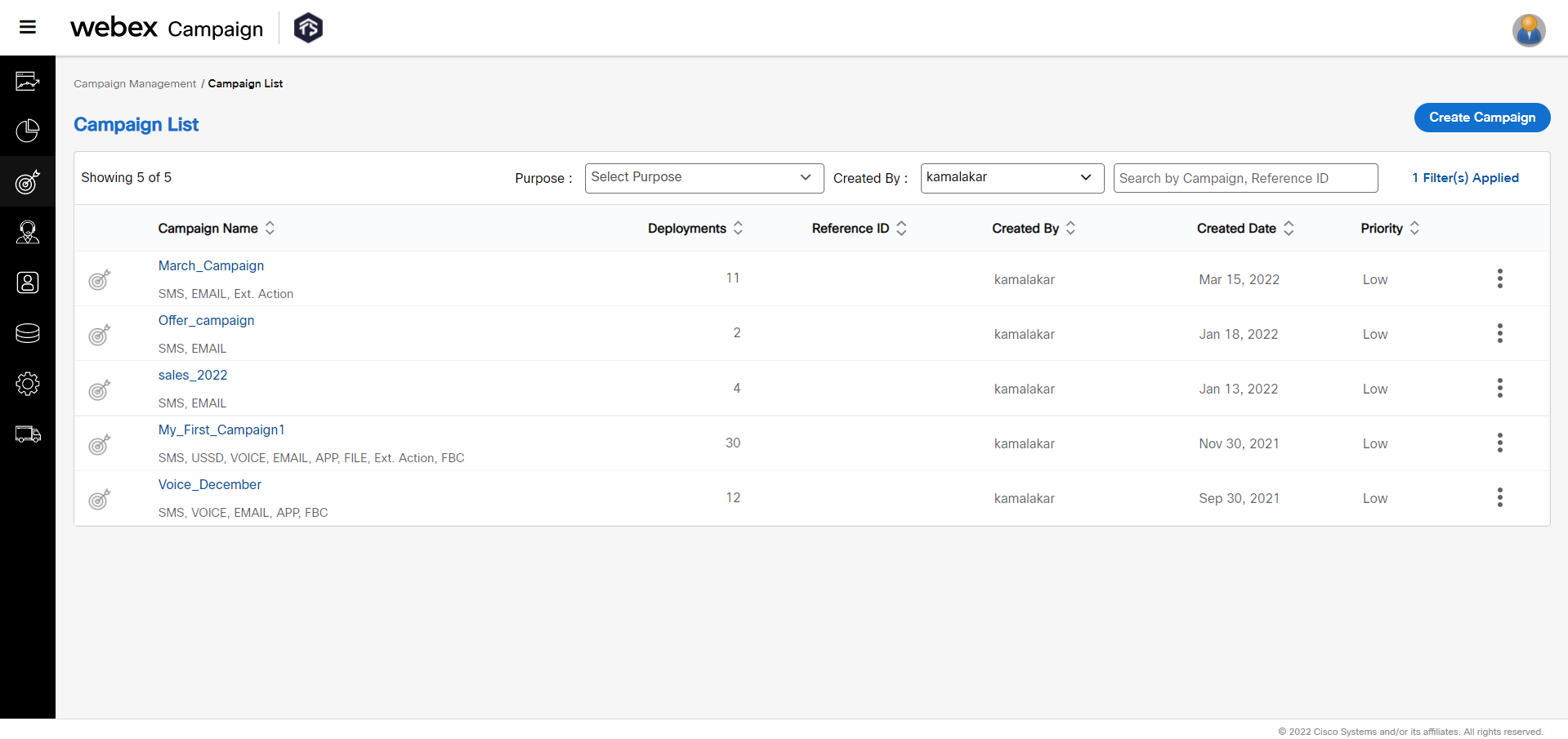
- Click Create deployment on the campaign summary screen that appears.
- Select the Deployment Type as Promotion.
- Select the Type of promotion as Simple promotion, mode of deployment as One time , and content type as API.
- Select the channel as Ext. Action and click Create.

- The Deployment creation screen appears. You have to configure each node in the deployment creation screen.
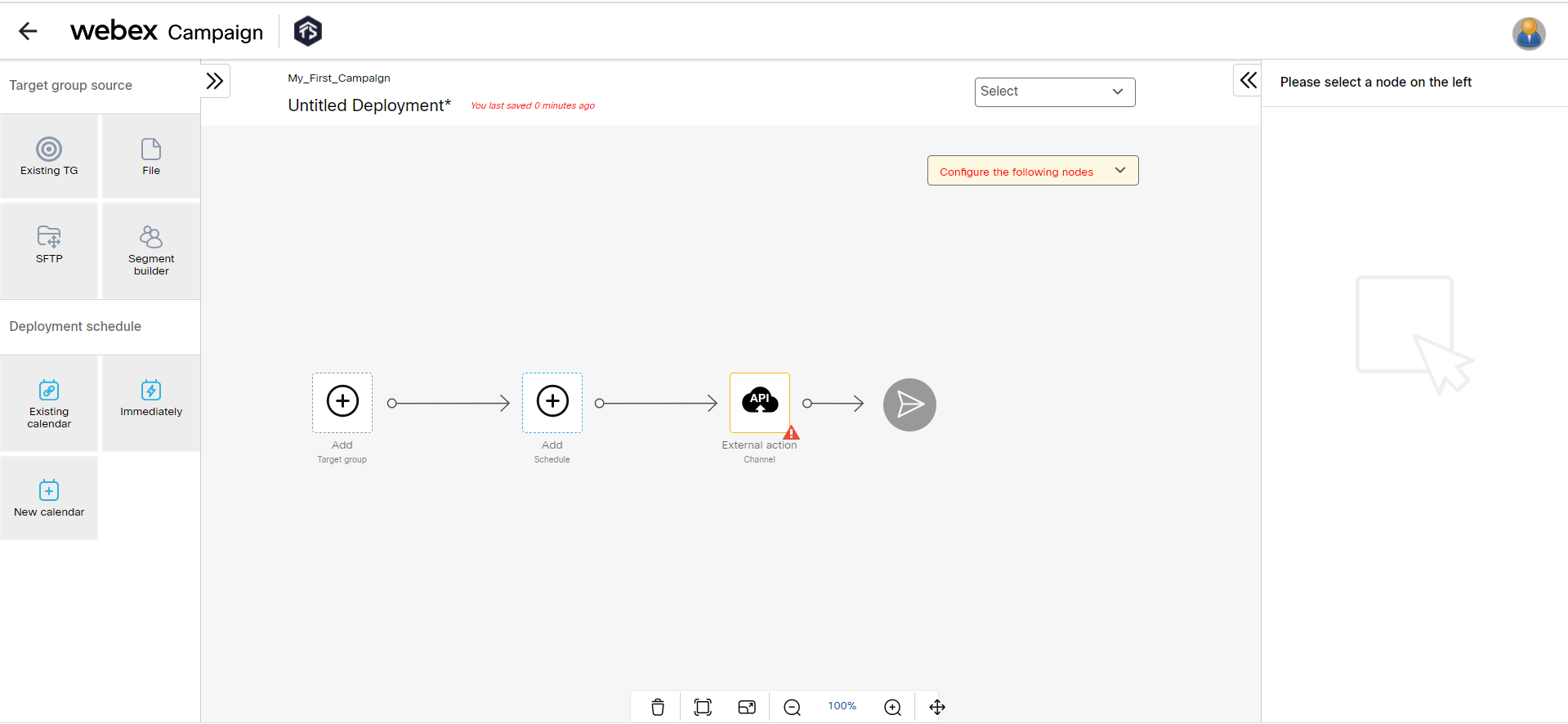
The left panel will display different nodes that can be used to configure a node, The nodes are grouped based on their usage. On selecting a node the right panel will display the configuration options.
a) Choose Your Recipients
In this step, the recipients of the deployment are selected. Select a target group that you previously selected in the WhatsApp deployment.
To select the recipients of the campaign:
- From the Target group source , drag and drop the Existing TG node onto the Target Group placeholder. We have chosen the Existing TG node because the target group is already uploaded as a prerequisite. For more information on adding a target group from different nodes, go to the Target Group Source Nodes section.

- Select the Existing TG node and click + Add from the right panel.
- Select the target group that was uploaded.
- Click Save & proceed to close the target group screen.
- Click Save changes.
Now the recipients are successfully configured for the deployment.
b) Create a Schedule
In this step, select a schedule to send your campaign immediately, or create a schedule (a date and a time) to run the deployment in the future. For this tutorial, we will run the deployment Immediately as soon as the deployment is activated.
The TPS for External Action deployment is calculated automatically after selecting the External Action.
To configure the schedule:
- Drag and drop the Immediately node onto the Schedule node.
- Select the Schedule node. On the right panel, click Save changes.
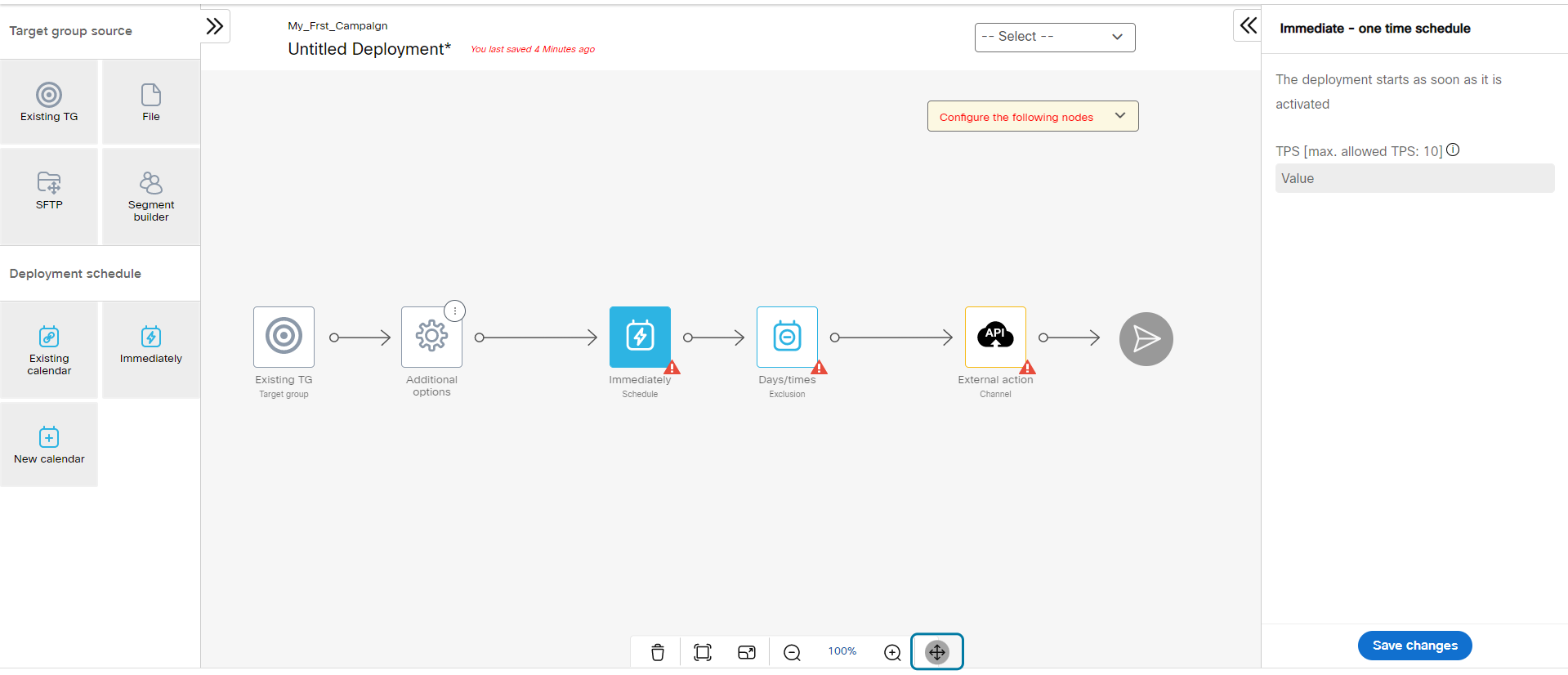
c) Configure Exclusion Day/Times
During the exclusion day or time, the deployment is paused temporarily and resumes once the exclusion day or time has lapsed. The exclusion day or time is set by the administrator that is applicable to all campaigns across the tenant. To add a custom exclusion day or time, configure this node.
For more information on exclusion days or times, go to the Exclusion days/times section.
For our tutorial, we will proceed with the default exclusion day or times. Select the Exclusion days/ times node and click Save changes.
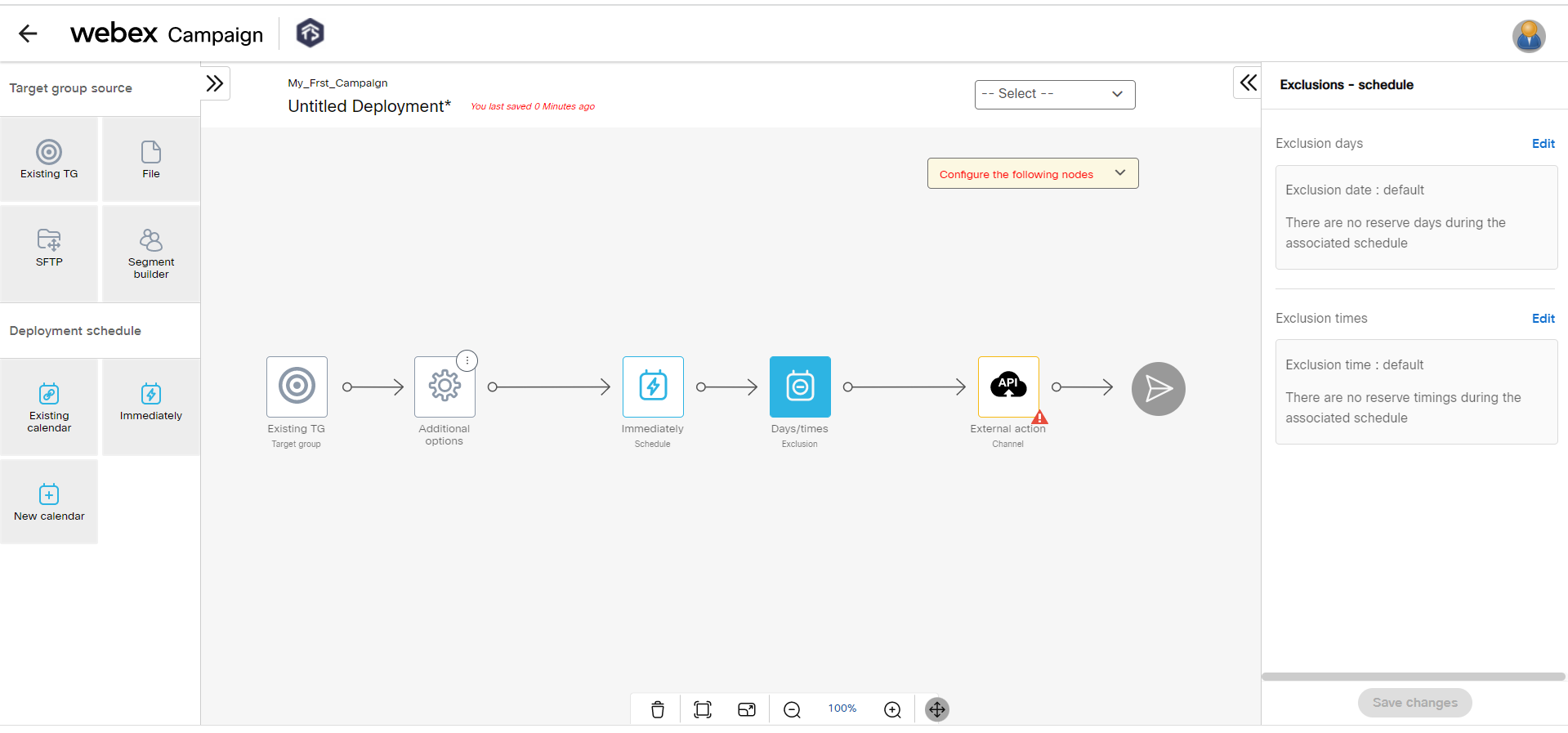
Now the schedule is successfully configured for the deployment.
d) Configure External Action and Parameters
In this step, configure the previously created external action and the parameters.
To configure the Ext. Action node:
- Click + Add . The External action configuration screen appears.
- Select the required action. You will need to select one of the pre-configured External actions.
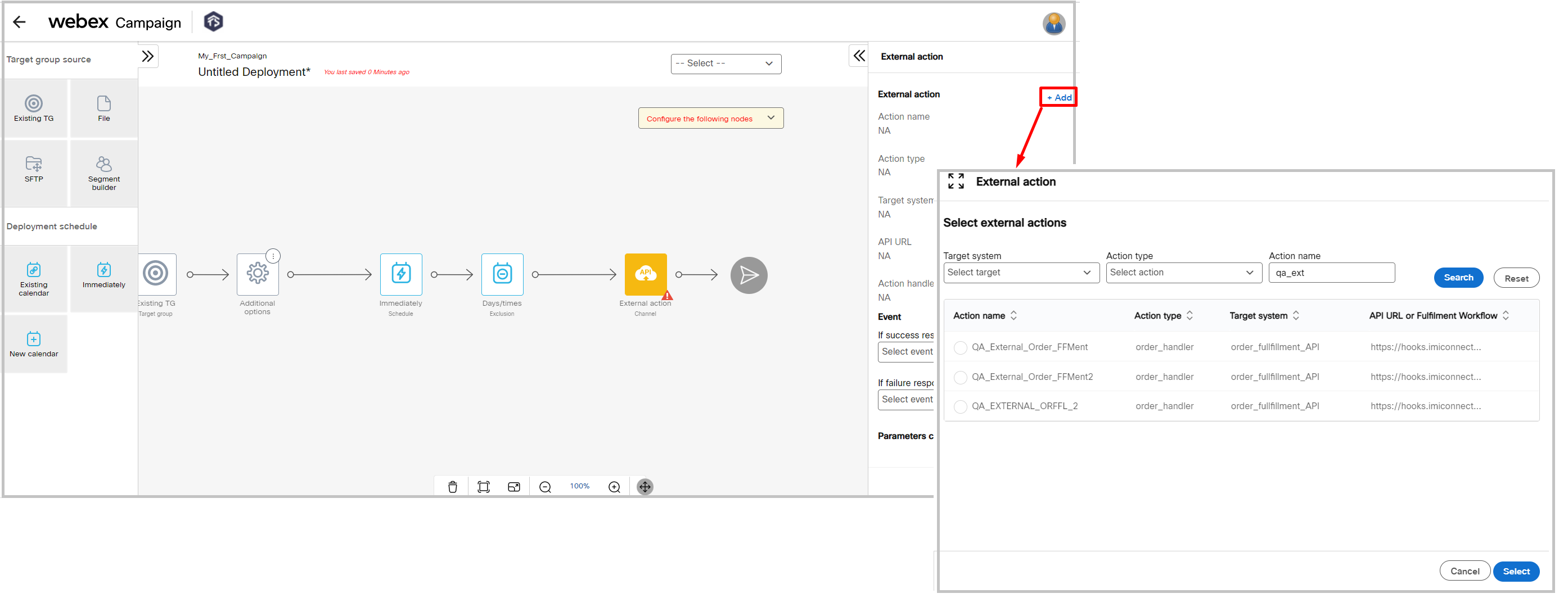
-
Click Select.
-
The selected action will be displayed in the right panel. The next step is to configure the Parameters. Click +Add.
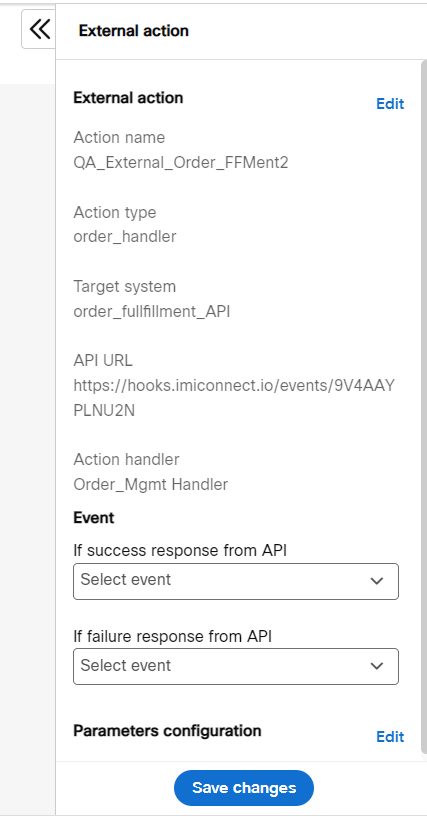
- Click Edit . The Configure parameters screen appears. Select the value for MSISDN attribute as MSISDN from the drop-down. For the deploymentId attribute, enter the deployment id of the In-App 'shell' deployment. The values for other parameters are generated automatically. Click Save.
These are the parameters that are defined in the Webex Connect flow.
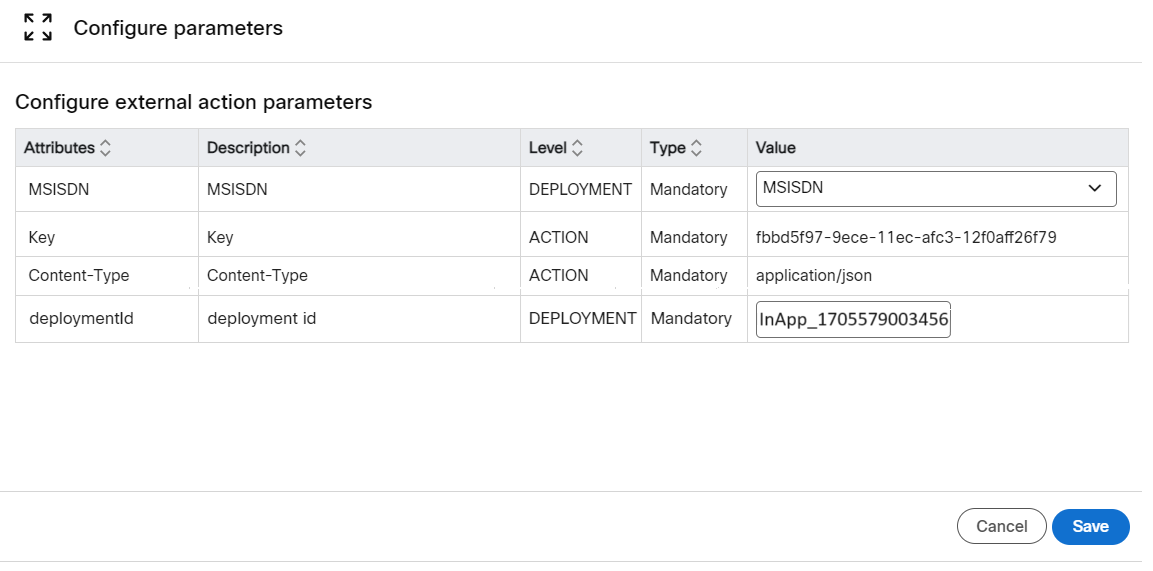
- Click Save changes to save the node.
Now all the nodes are configured.
e) Save the Deployment
In this step, the deployment can be saved as a Draft or ready for Activation. The Deployment meta tags are mandatory to activate a deployment. If you are not sure of the Deployment meta tagsthat should be used, you can save the deployment and come back later to select the Deployment meta tags.
To save the deployment as ready for activation:
- Select Save & exit. The Save deployment screen appears.
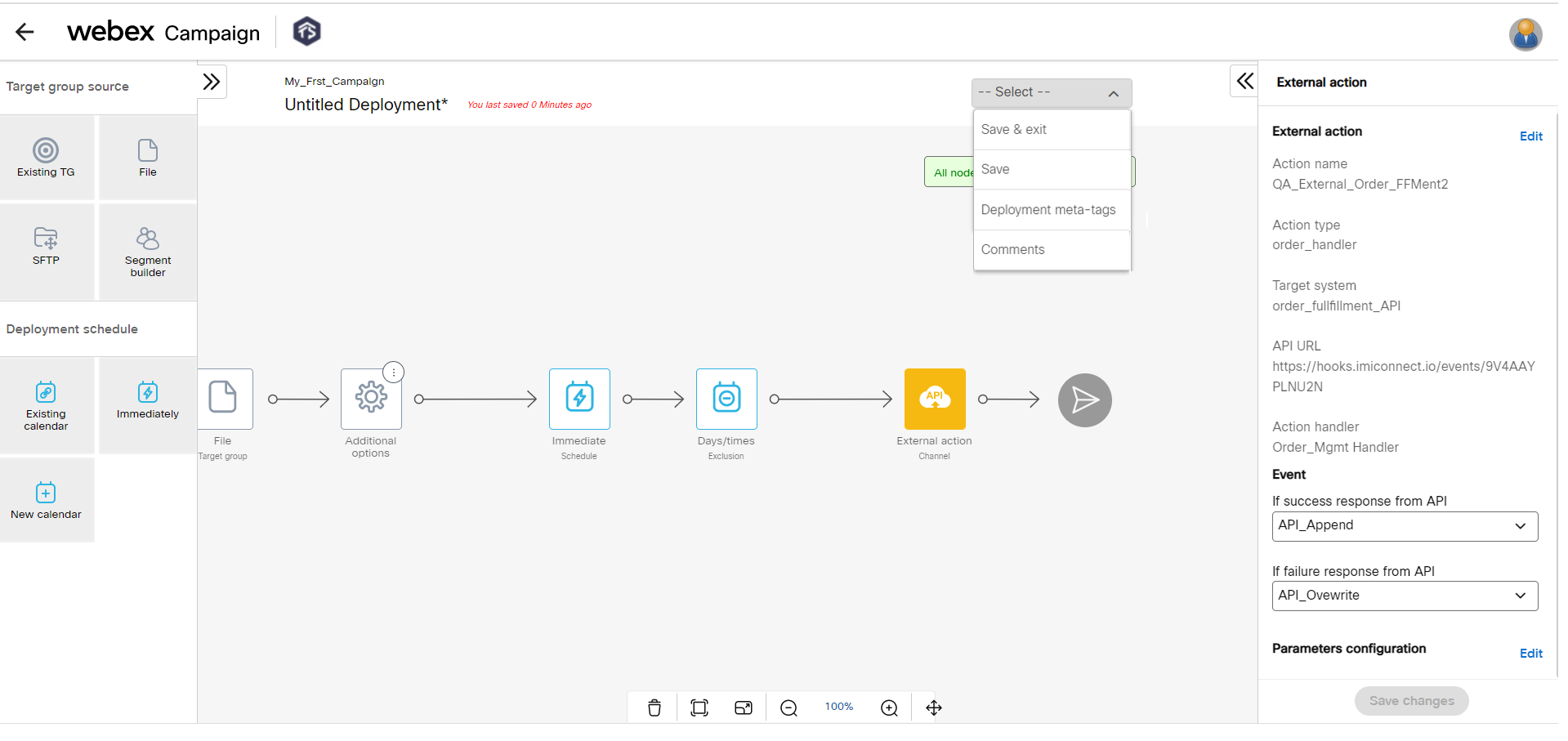
- Enter a name for the deployment such as My_First_inapp_Ext_Action.
- Select a P&L to which you want to associate this deployment.
- Select one or more purposes from the Purpose drop-down.
- (Optional) Enter a Deployment code.
- Click Save.
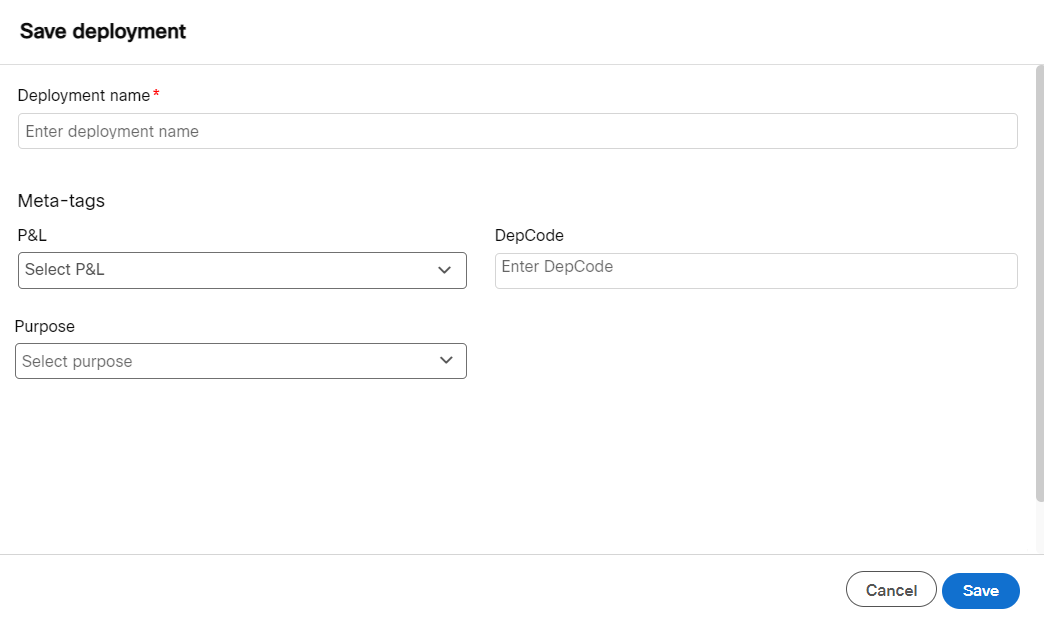
Now the deployment is ready for activation.
f) Activate the Deployment
On the Campaign List screen, click the ellipses icon of the deployment and click Activate. You will receive notifications for various stages of the deployment.
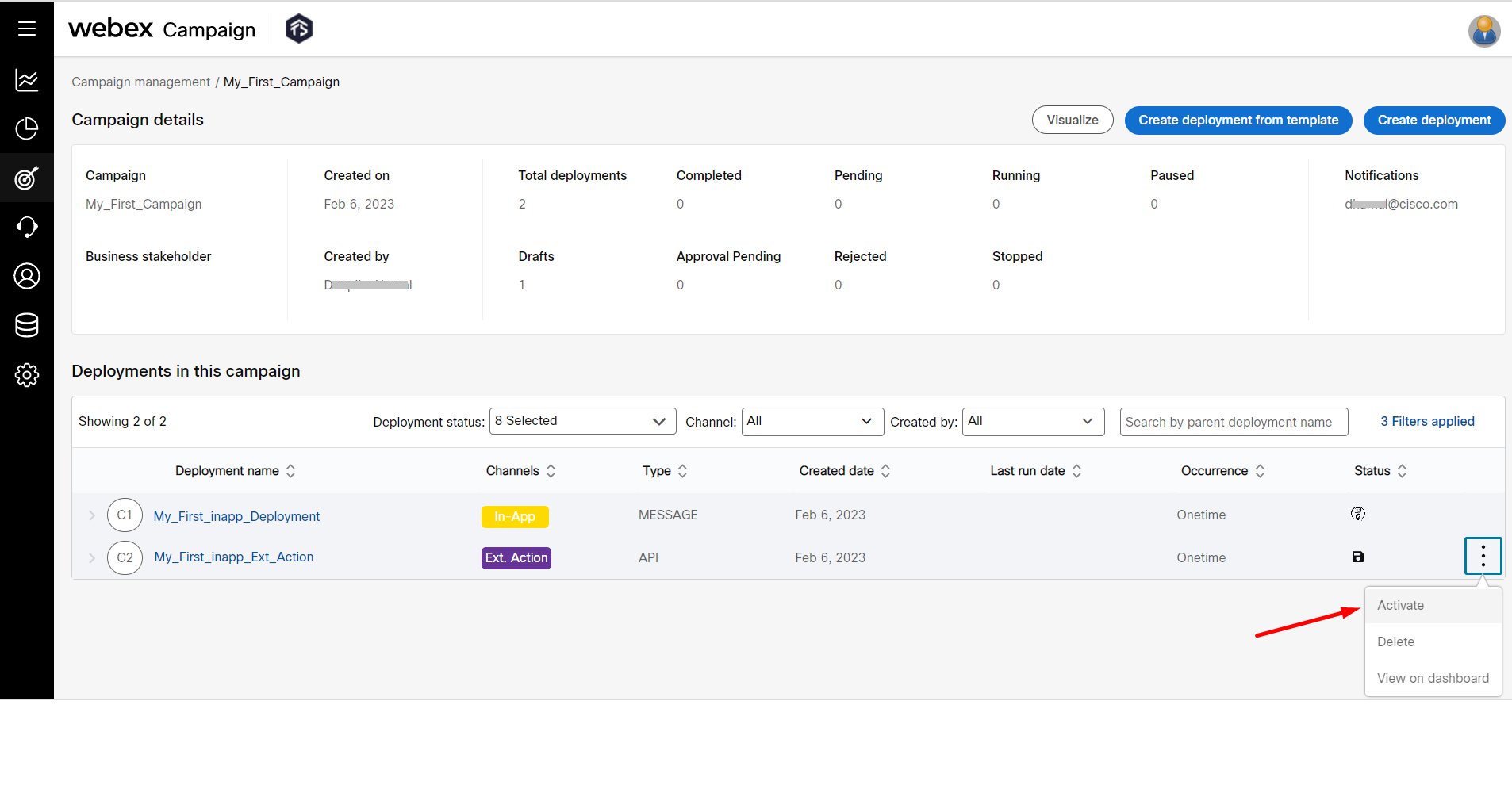
If the user does not have permission to approve their own created deployments, then instead of Activate button, you will notice Send for approval.
You can go to the Dashboard section to view the performance of your deployment.
If you have questions, please contact your Webex Campaign account manager or Cisco Webex technical support team by phone or email:
- Europe / Middle East / Africa:
- Phone: +44 (0) 1494 750 600
- Email: [email protected]
- North America:
- Phone: +1-855-324-0970
- Email: [email protected]
Updated about 1 year ago